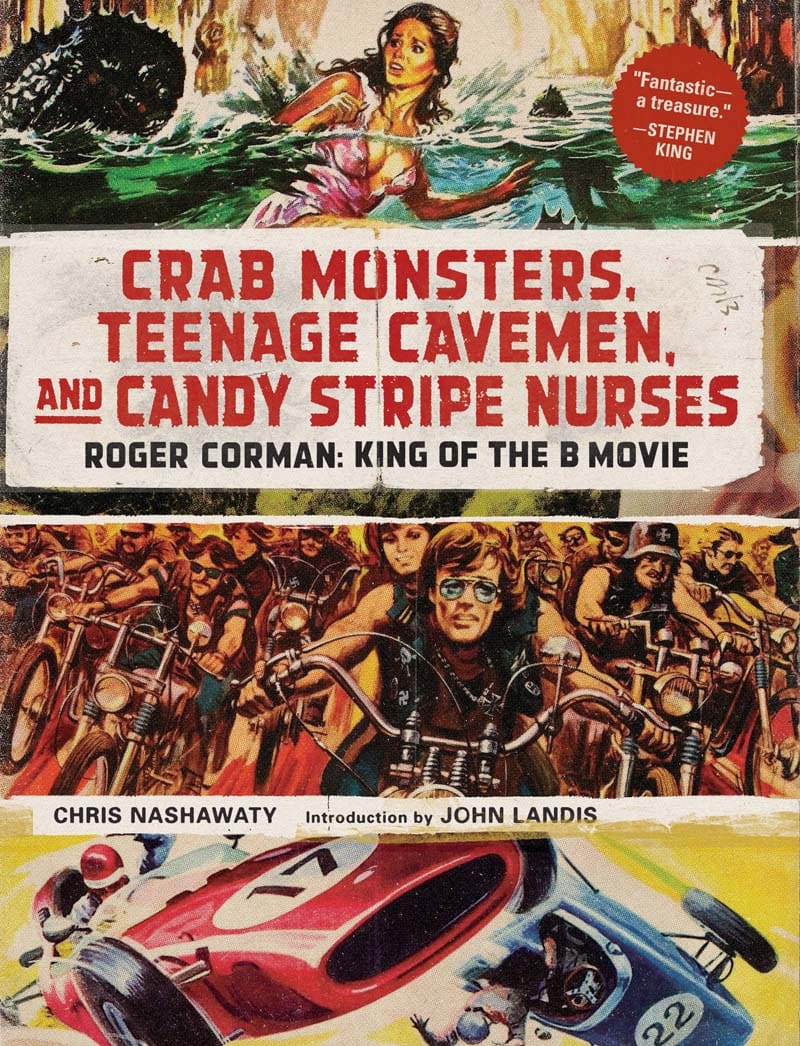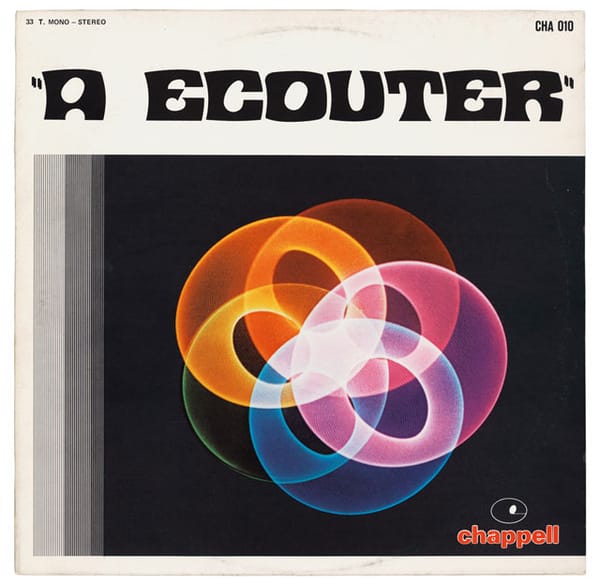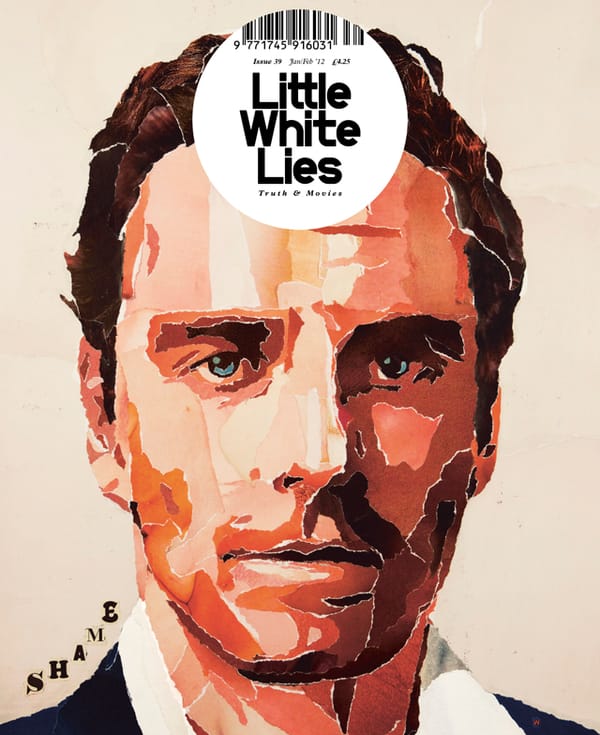Few have had as much impact or longevity as the film maker Roger Corman. This new retrospective, Crab Monsters, Teenage Cavemen, and Candy Stripe Nurses, does its best to contain his legacy.
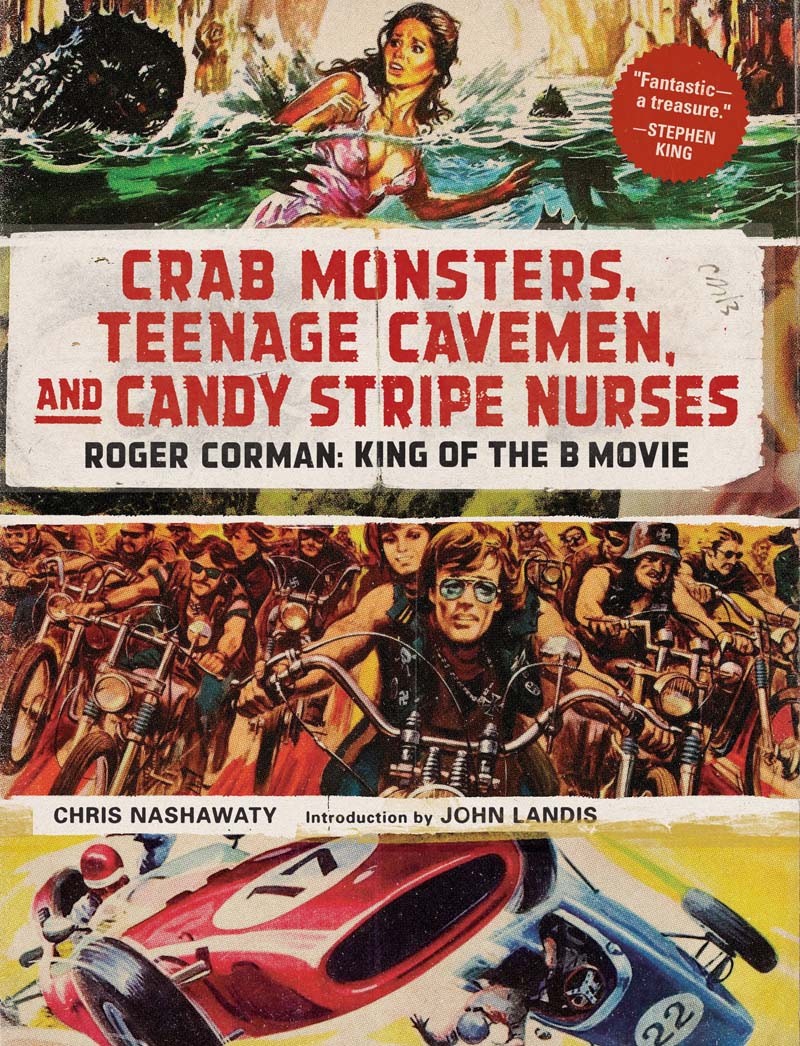
Someone has capitulated. An executive decision was made on the titling of this book: hell, we’ll just pick three favorite movie titles and run with it. To fully capture the exuberance of the movies that are its subject — the oeuvre of the director and producer Roger Corman — would, admittedly, be a tall-order. Others have failed before: Beverley Gray’s unofficial biography of Corman used Blood-Sucking Vampires, Flesh-Eating Cockroaches, and Driller Killers. The shame for each is that they had to hold it there, strung by practicalities of inventory listing and marketing collateral.
As I don’t have any such restrictions I shall continue where they could not: Ski Troop Attack, War of the Satellites, Hot Car Girl, The Saga of the Viking Women and their Voyage to the Waters of the Great Sea Serpent, Highway Dragnet, The Last Woman on Earth, Beast From Haunted-Cave, She Gods of Shark Reef, The Brain Eaters, A Bucket of Blood, Blood Bath, Queen of Blood, The Terror, Creature from the Haunted Sea, Battle Beyond the Sun, X: The Man with X-Ray Eyes. These titles are everything and nothing, concrete but impossible images which act as guarantors of excitement — as Martin Scorsese remarks in one passage from the book: “I mean, come on, with a title like that, how can you not want to go?” Each travels beyond the beyond and then a little further, but that’s the only place you’re likely find a man of Corman’s ambition.
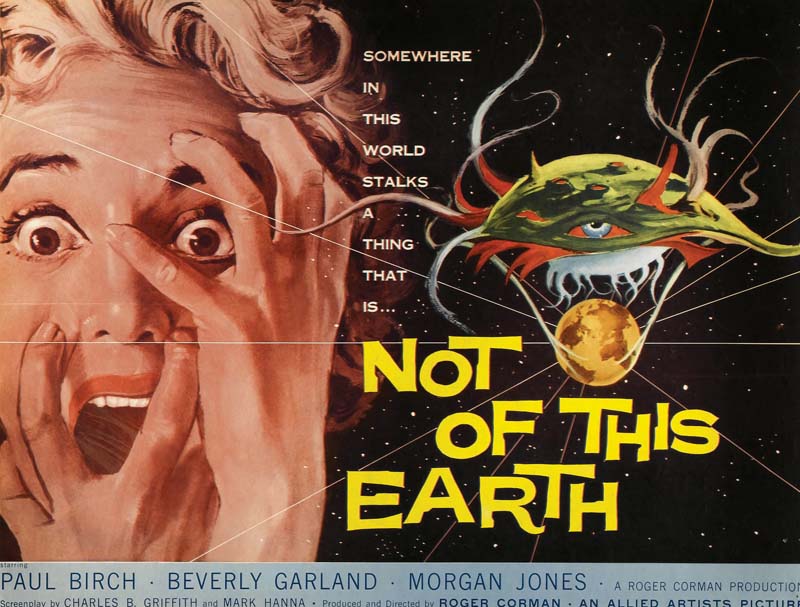
Though Corman didn’t invent the B-Movie, he defined the genre to a greater extent than any of his contemporaries. The above list represents only a fraction of his output: though he modestly named his own assessment of his career How I Made a Hundred Movies in Hollywood and Never Lost a Dime, the Internet Movie Database credits Corman with directing 55 films and being involved in the production of a staggering 385. Lists beget lists where Corman is concerned and to glance at the role of directors who got their break working with him (the so called “Roger Corman Film School”) impresses upon you just how much of the contemporary film industry he has shaped. Protégés include Scorsese, Francis Ford Coppola, Ron Howard, Peter Bogdanovich, Armondo Linus Acosta, James Cameron and Jonathan Kaplan. A litany of now familiar actors owe him a similar debt: Jack Nicholson, Peter Fonda, Bruce Dern, Michael McDonald, Dennis Hopper, Sandra Bullock and Robert De Niro, to name a few.
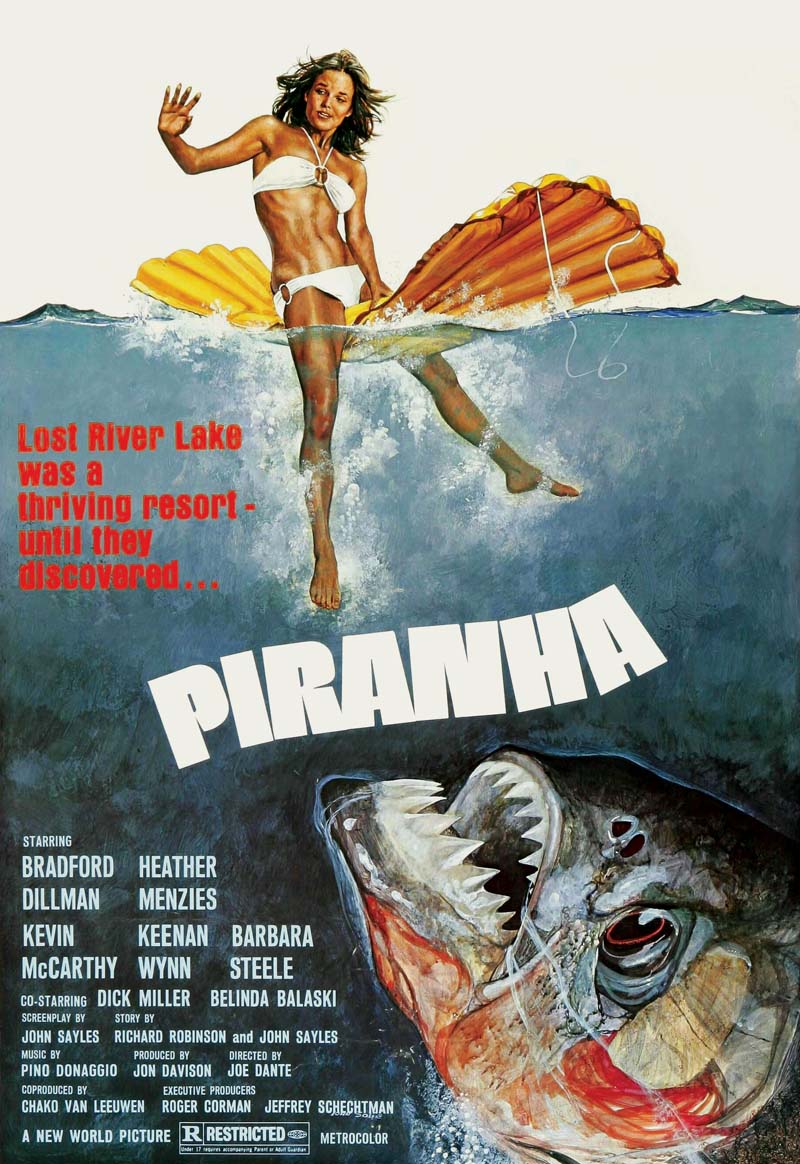
Though trained as an engineer, Corman’s creative persona sits somewhere between the exuberance of 1940s California, having moved to the sunshine state as a teenager, and the darkness of the Edgar Allen Poe novels that he’d consumed as a child and around which he would base some of his most celebrated movies. He started out making films under his own Palo Alto Productions label with 1954’s Monster from the Ocean Floor. It cost $12,000 and was filmed in six days. This was to set the continuing tone for Corman as he produced ecstatically throwaway B-movies on small budgets and smaller deadlines, sometimes at a rate one a month — incendiaries designed to pull America’s adolescent audience into its drive-in theatres.
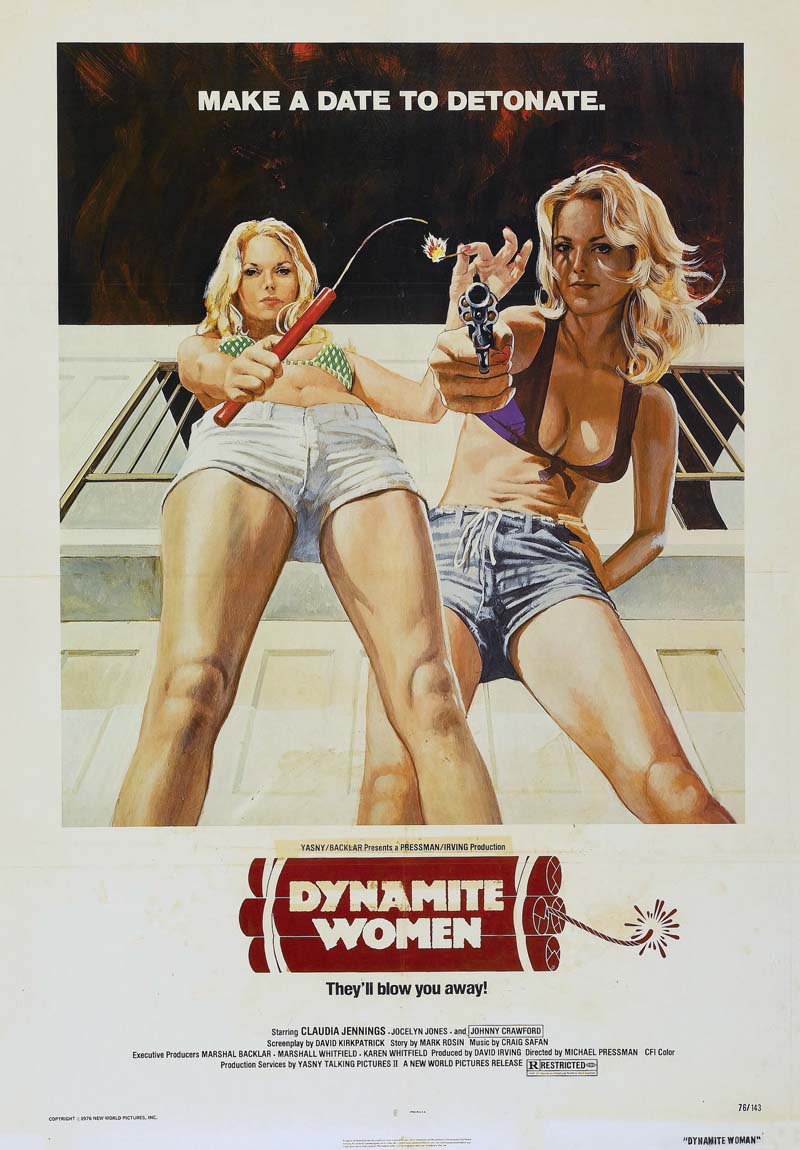
This is the story that Roger Corman: King of the B Movie relates, from 1954 to the new millennium, through a series of candid oral histories gleaned from some of Corman’s most famous students as well a “critical essays”, according to the publisher at least, on several of his most noteworthy features. While the essays are little more than one-page synopsis and a bit of historical context, the oral histories that make up the majority of the book are fascinating. Chris Nashawaty has interviewed over sixty individuals touched by Corman’s influence, with the subsequent transcripts being chopped and reordered into sound bites that narrate the story of the man’s working life. It’s a format that sounds clumsy, but judicious editing has created a text that reads as both authoritative and informal.
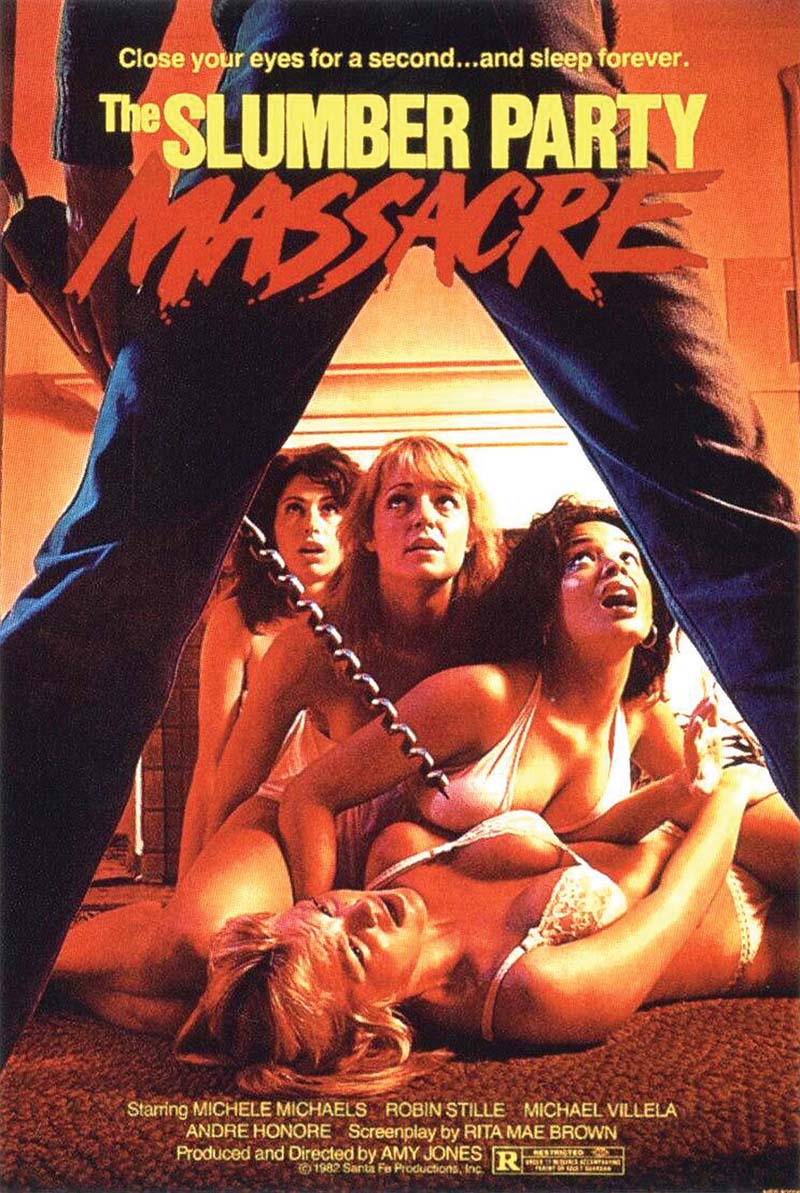
Liberally interspersed between these snippets and accompanying movie stills are reproductions of Corman film posters, central to the appeal of the publication and almost an aesthetic genre unto themselves. Tasked with capturing the fleeting attention of thrill-seeking kids, these compound images acted as a kind of steroidal tableaux vivant, each threatening to usurp the movie that they are designed to advertise. These weren’t teasers but out-and-out spoilers. That wasn’t a hindrance, of course, given the way B Movies play on narrative convention – the only twists are the ones you’d most expect – what the poster needed to prove was that the film was going to give you exactly what you wanted in the largest possible dose. They were key in creating a kind of cinematic omniscience that lets the viewer, sprawled across the bonnet of a car, revel in the action without the need for over-investment or strict attention. This was Punch and Judy for midcentury America and the accompanying movie poster meant that you didn’t have to worry about what you might miss when searching behind you for another beer.
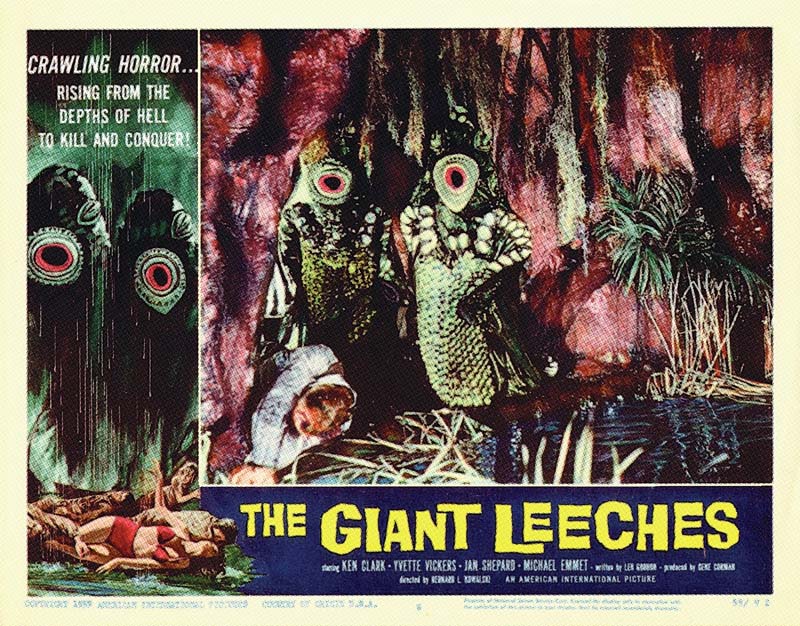
As his brother and partner Gene Corman puts it: “We couldn’t get actors of substance, and you had to have something to hang your hat on, so we felt exploitation and horror was what the marketplace wanted. Movies like Night of the Blood Beast and Attack of the Giant Leeches. You could make them cheaply, and didn’t need a big name – you just had to have a great poster. That’s how you sold everything!” Crab Monsters, Teenage Cavemen, and Candy Stripe Nurses: Roger Corman, King of the B Movie, by Chris Nashawaty
Published by Abrams Books, £19.99

